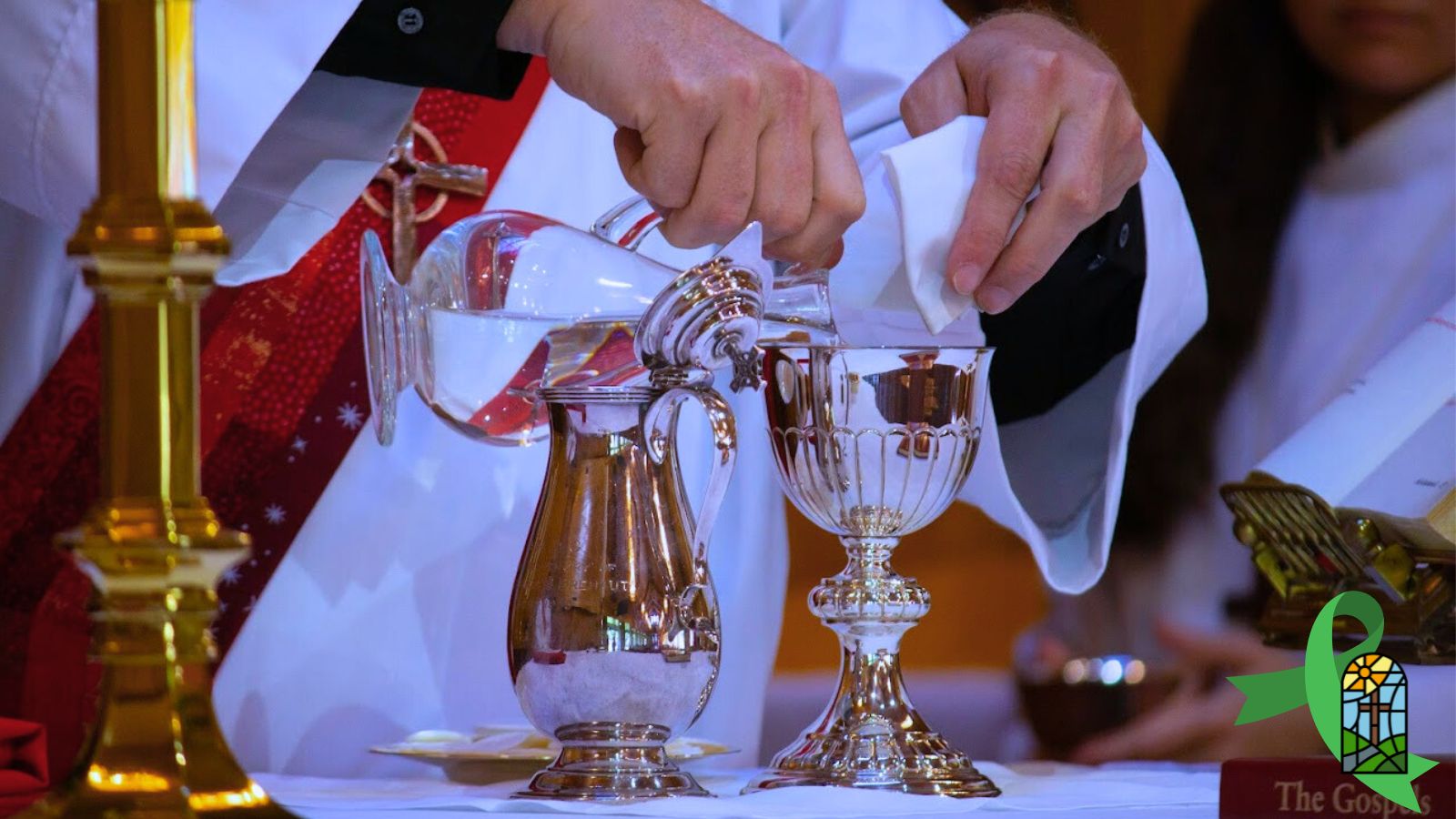When all of the craziness of life comes at you relentlessly, you can find healing through liturgy.
On the surface, liturgical worship may look mechanical and repetitive. But when you dig deeper into what it’s all about, you’ll find incredible beauty and tradition. There’s a richness in the rhythms of the liturgy that’s unshakable. It repeats the practices that go back to the first couple centuries of Christian worship, which mimicked ancient Jewish worship practices that go back even further. Because Scripture readings come from a common lectionary (a three year schedule of readings from across the entirety of the Bible), and prayers (some which are centuries-old) cycling through the liturgical seasons are repeated by churches globally, there’s a sense that we’re part of something far bigger than ourselves.
Liturgical worship, however, also creates a healing structure of God’s presence and rhythms that speaks powerfully to our anxiety, trauma, and disconnect. It reaches into our very being with a healing touch that only God Himself can bring.
Worship as a Healing Act of Presence
The year 2020 was a difficult one for all of us. But it’s a great example of how I started feeling a shift towards the liturgical inside me. And I need you to hear my heart on this one. I’m not trying to be critical of one type of church over another. They all have their strengths, and there are many qualities from other churches that I absolutely cherish! But the ones I’ve been involved with tend to lean on emotional experiences. Overall, that’s not necessarily bad. However, in a year like 2020, when we were dealing with a global pandemic, racial tensions, a fierce (and toxic) election cycle, and so many other things, our society was already on emotional overload. And it’s easy for that to creep into a more emotionally-driven church.
And I hated it. It wasn’t doing anything to ease my already anxious heart.
We had Sundays when we went in nearly crying and just praying that we didn’t want to hear about the insanity happening outside our walls for a moment… We just want Jesus!
For my family and I, it was during this time when we started visiting a friend who recently became a priest in an Episcopal church. As we sat through the liturgy, we felt an incredible amount of peace. There was almost a reprieve from the madness of what was happening in the world. Hearing the scripture readings, praying along with the prayers, celebrating the Eucharist… We often felt like we just got more Jesus in an hour and fifteen minutes there than we did in the previous months in our home church.
And we’ve found that same Presence and Peace there since we’ve made the permanent shift.
Every time we went back, we experienced the same sacred rhythms. And that was one of the keys to what we felt in the liturgical church. I a world of chaos, the liturgy offers dependable structure and sacred familiarity. And it wasn’t just in the words we say, but how we’re held in a rhythm that reorients us to God. It always pointed us back to Christ.
The liturgy meets us where words can fail us, and it brings the presence of Christ into our hurting and broken souls.
Embodied Healing Through Repetition and Ritual
There are a couple dynamics happening in the rhythms of the liturgy that brings healing. They have to do with repetition and performance.
Before we look at how the liturgy heals, we first need to understand how things like trauma can damage our mental health. Dr. Arielle Schwartz, PhD has done extensive research and teaching in the areas of PTSD and complex trauma. And she’s written about the neurobiology of traumatic memory. She shares how trauma impacts brain functions, saying:
“Trauma fundamentally alters brain structures involved in memory and emotional regulation — including the amygdala, hippocampus, and prefrontal cortex — leading to fragmented memories, heightened fear responses, and difficulty managing emotions.”
This contributes to conditions like anxiety, depression, and PTSD. And we’ve explored how mindful meditations (like praying the Psalms) can improve brain function and bring therapeutic benefits. And we’ve explored how the rhythms of the liturgical calendar brings structure and stability. And all of that comes together in liturgical worship.
While the words are repetitive, they bring a sacred voice when our own voice doesn’t know what to say. Often, the broken pieces in us don’t know how to pray. And in the liturgy, we don’t need to. Even in simple prayers like, “Lord, have mercy. Christ, have mercy,” We invite God to peek into our soul (mind, will, and emotions) and bring His healing.
And the repetition is healing, not only in the words we repeat, but also just in the fact that its rhythmic nature brings stability. When you enter liturgical worship, your mind can rest in a high level of certainty, which is crucial when uncertainty brings greater levels of anxiety.
Where trauma disrupts memory and emotional regulation, rhythmic worship restores safety and consistency.
The other side of this has to do with performance. Adam Couchman, Lecturer in Liturgy and Theology at St. Francis College, explores this in his paper, The Healing Power of the Liturgy. In it, he looks at the role of confession in the liturgy having a role in healing, but also makes some incredible observations on the role of performance:
“The church performs liturgy within the liminal space of mediation, in Christ by the Spirit. Whilst performers make every effort to complete the actions prescribed in the liturgy effectively there remains a liminal quality for any performance. If not, it remains an act of a magician trying to manipulate and control the divine through the correct performance of the rite. Instead, the liturgy relies upon the mystery of the God who is wholly other and invites creation to join in theodramatic performance in Christ, by the Spirit.”
I’ve been in many church experiences where, looking back, it feels like the pressure was on us (the worshippers) to make something happen. We called it “inviting the Holy Spirit.” But ultimately, if we didn’t pray right, sing right, or whatever else right, then we didn’t draw the experience with the Holy Spirit. It was only when we got the right songs and right prayers that we’d get more out of it. The pressure to perform was on us.
In contrast, when we come into liturgical worship, we’re not counting on our own performance. Rather, we’re showing up into the performance of Christ. And that takes a lot of pressure off of us.
With less pressure to perform, it opens more space for us to accept the healing power of Christ.
The Theological Weight of “We”
Another enemy to our mental health is isolation. That became much more clear in the COVID pandemic shut-downs. When people were forced into lock-downs, the rates of mental health issues skyrocketed. And it had widespread effects with damage to socialization of kids in school, and a major move toward remote working resulting in less face-to-face time for adults.
Isolation makes suffering worse. And that’s where a shared worship experience can be therapeutic.
One element of that is simply just being in community with one another. Being together in one place matters!
With the COVD pandemic, many churches moved to online worship services. These met some of the basic need of many people to connect and get their regular connection with biblical teaching. The problem is that it lacks the face-to-face connection. When the screen goes off, you again are alone, instantly. And really, you were alone to begin with, not being able to shake hands and hug other people who are there to worship together.
So being together in-person is important, but this goes deeper than that.
One thing that you find in liturgical worship is we. It’s in the words of the prayers, creeds, confession, peace, and Eucharist.
In the creeds, we recite the words, “We believe in…” And in speaking of Jesus, we say things like, “For our sake he was crucified…” Furthermore, in the confession we pray, “Most merciful God, we confess that we have sinned…”
All throughout the liturgy, there are statements like these that get us recognizing that this is a we thing, not a me thing. It’s not something we do on our own. We are part of something bigger than us, and we come and worship together as one. We are not alone, and it’s written into every element of the liturgy that guides our worship.
This also speaks to our identity as worshipers. In his lecture, Good Lord, Deliver Us: Trauma and Anglican Liturgy, (now) Bishop Justin Holcomb talks about liturgy and our identity, saying,
Liturgy bestows an identity to survivors that encounters the identity reinforced by trauma. Liturgy bestows an identity. Trauma maligns a survivor’s sense of self, and communicates that they don’t belong to the human race, are crazy, are monsters, are foolish, worthless, damaged, defiled, dirty. Given that trauma inflicts powerlessness, betrayal, confusion, and rejection, it’s not surprising that victims often experience a distorted self-images. This can fuel self-blame, self-hate, self-harm. Distorted self-image can also lead to isolation from others who might help a sense of safety and grace and love. There’s a tragic nature to this. The liturgy has moments of bestowing identity to us, which is important to a survivor.
Sharing from an experience he’s had during worship that hits where the liturgy speaks to this identity, he says,
I still remember a time [when] I held the elements for the invitations that said, ‘The Gifts of God, for the people of God.” Because I watched people who during the confession were slumped over in guilt. Then during the absolution I saw them give a sigh of relief. Then I got to call them people of God. People of God is a fulfillment of covenant, loving-kindness, relationship that God establishes. ‘I will be your God and you will be my people.’ Being a member of the family of God means that God accepts you. The Lord takes pleasure in His people.
It’s in this collective identity that we experience throughout the liturgy where we find purpose and meaning and realize that we’re not alone.
The Presence of Christ in the Eucharist
There’s one more way that we find healing in the liturgy, and that’s through the Eucharist. So let’s talk a little but about incarnational theology. It may sound complex, but there’s actually a really beautiful and simple idea in there that’s integral to our faith.
The incarnation really just means that God is with us. It’s the Christmas story. Baby Jesus born in a manger, Emanuel (God with us) lives and breathes among us in a physical body. He grew up, worked, lived, laughed, cried, felt pain, and loved people face to face. He had a physical presence here with us.
Here’s the really cool part. Before He died (and rose again, and ascended into Heaven), He left us with a way to continue to experience His presence. It’s in the Eucharist, Holy Communion. When we receive the broken bread and the poured out wine, we’re not just remembering Him or something He did. We’re meeting with Jesus Himself in that moment, we’re receiving His presence in the sacred elements.
The incarnation means that God showed up for us in the flesh through Jesus. The Eucharist, then, is that flesh showing up for us again and again. It’s the Lord’s way of still meeting us, still feeding us, still healing us.
When we come to the Table with all of our junk, He meets us there. We’re not just reminded of grace, we receive it physically. Our brokenness meets the broken bread.
St. Teresa of Calcutta once said,
Jesus has made Himself the Bread of Life to give us life. Night and day, He is there. If you really want to grow in love, come back to the Eucharist, com back to that Adoration.
Presence matters. And we can find healing when we receive that Presence.
Final Thoughts on Healing Through Liturgy
Life comes at us hard far too often. And it’s easy to let it beat you down. But even in the face of the world’s greatest assaults on our peace and clarity, liturgical worship is a rock for us to stand on. It restores what stress and anxiety and trauma breaks down by offering a rhythm of healing presence.
The best part is that Episcopal/Anglican worship has several ways to take advantage of liturgical worship. Most churches offer mid-week Eucharist services in addition to Sunday worship. You’ll find many of the same elements in morning and evening prayer (the Daily Office) and compline prayer, all liturgical forms of prayer that follow the same rhythms. The prayers and Eucharistic liturgies don’t require much from you, except to be present.
When we don’t have the words ourselves, the liturgy speaks for us.
So if you’re feeling spiritually numb, mentally scattered, or emotionally raw… just come. Not to perform. Just to be held in the presence of Christ.





0 Comments